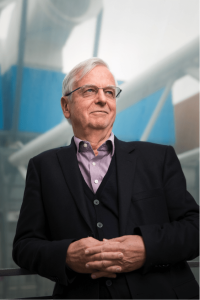This note on renewable energy storage options summarizes some facts deemed significant by our fellows in the context of the Presans Platform activity.
1. Two definitions
Some basic definitions will not be too much to draw the contours of a field where sometimes we can proliferate far-fetched ideas.
Renewable energy: an energy that does not rely on fossil or nuclear fuels.
Storage: equipment, strategy or approach that allows the energy availability to be phased out in relation to the need.
2. The families of technology involved
The major families of storage technology are distributed first according to their type of cycle, with one side daily or weekly needs, and the other seasonal needs.
Storage in the form of batteries (lithium for example) is suitable for meeting daily and weekly needs. Electric vehicles can complement this system by becoming themselves electrical storage units connected to the rest of the system.
The problem of seasonal storage is analogous to the invention of cheese, which made it possible to make high-altitude summer milk production available in winter and in the valleys.
The two main routes for seasonal storage lie in the production of synthetic fuels and in increasing the capacity of hydroelectric dams.
The production of synthetic fuels is organized according to three sectors:
- The direct solar-hydrogen sector, with CO2 capture in different sectors.
- The photovoltaic industry, combined with hydrolysis.
- Fuel cells, for example solid oxide, working sometimes in hydrolysis mode sometimes in power generation mode (with or without CO2 separation).
Seasonal storage provides a solution to the needs of large homes and urban plants.
Geothermal energy is outside the scope of synthetic fuels but deserves mention as a technology based on the natural storage of heat or cold in the earth.
3. An important issue
At the European level, the issue of renewable energy storage concerns the energy independence of the various countries and the region as a whole.
At the national level, let us mention the fact that today France is dependent on German coal in winter. This dependence could be reduced by limiting the direct electric heating.
Germany, for its part, has invested heavily in renewable energy, while having a massive fleet of coal power plants with capacities exceeding local needs.
France is the nation par excellence of nuclear power.
Switzerland, like other countries, is reviewing its energy strategy with a view to a transition towards a more rational use of energy, a more dynamic development of renewable energies and a gradual exit of nuclear energy.
Japan and the USA experience a double seasonal, winter and summer peak due to the need for air conditioning.
Global warming could spread the need for air conditioning.
4. Disciplines, methods, required fields of expertise
The main disciplines involved are: thermodynamics, electrochemistry, fluid mechanics, electrical engineering, power electronics, especially for permanent magnet generators (or motors).
The storage of renewable energies (such as rational use) uses thermo-economic methods, more or less holistic, to take into account the great variability of electricity sources and a multiplicity of environmental, energy and technological parameters. They rely on advanced mathematical optimization tools in the context of so-called multi-period planning approaches.
They also integrate multi-product approaches, including tri-generation (electricity, heating, cooling), at different times and taking into account pricing and storage constraints.
As for the expertise mobilized, they also include sociological aspects that are often critical in a context where oppositions are difficult to reconcile. This is the case for wind energy technologies, as is the case for geothermal energy insofar as this approach leads to the use of fracking techniques similar to those used for gas exploitation. shale.
The use of noble or rare metals can also provoke debate and be perceived as a brake, rightly or wrongly. Future approaches to recycling these metals are one of the key elements of the problem.
5. The industrial players
The first group of actors is made up of the operators of the energy sector, type EDF.
We also include the gas activities of these groups as well as the gas companies. The profitability of the investments made in the distribution networks can notably involve the transport of methane or even hydrogen (synthetic ev), used for the production of energy services by fuel cell or motor, as well as for the operation of the heat pumps. gas capable of providing hot and cold.
Such a reconfiguration opens the possibility of switching the network in “power to gas” mode or “gas to power” mode according to the needs and contexts: in case of surplus electricity, to make gas, and in case of electrical needs to make electricity from gas.
These are strategic optimization options in a context where almost everything is to be built.
A second group of actors is constituted by the major industrial users of energy, emitters of CO2 likely to be used in the production of synthetic fuels. This is particularly the case for cement producers, major producers of CO2 and therefore likely to become key players in the production of synthetic fuels.
Processors, especially refiners, are also interested in hydrogen from renewable sources to enrich the fuels they produce.
*



